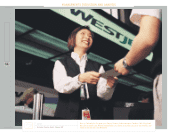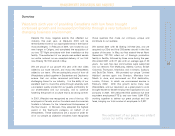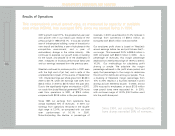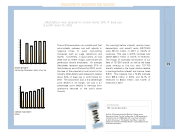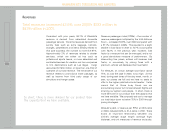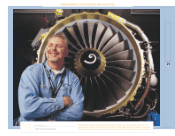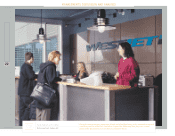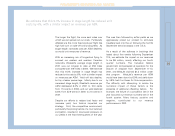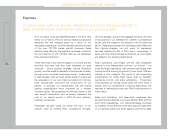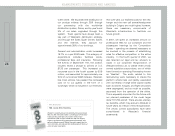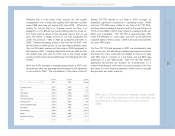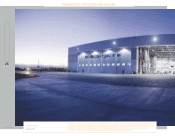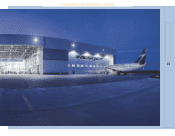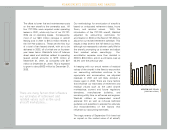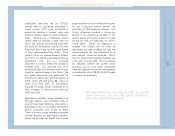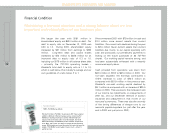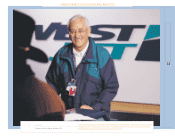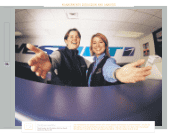Westjet 2001 Annual Report Download - page 26
Download and view the complete annual report
Please find page 26 of the 2001 Westjet annual report below. You can navigate through the pages in the report by either clicking on the pages listed below, or by using the keyword search tool below to find specific information within the annual report.
24
On a unit basis, costs per ASM decreased 4.1% from 14.6
cents to 14.0 cents. The two primary factors causing this
decrease are the reduced costs as a result of our
increased stage length, and the reduced operational costs
of the new 737-700 series aircraft; however, these
benefits were offset by the significant increase in costs of
the amortization of the 737-200 fleet as we accelerate
their planned retirement.
There were also many other changes in our airline and the
economy this past year that have impacted our cost
structure. Some positive changes include WestJet’s
growth, and the resultant benefits of economies of scale,
as well as our improved purchasing power. Investments
in technologies, such as touch screen check-in kiosks and
the acquisition of our own flight simulators for training,
have substantially improved the productivity of our
people. In contrast, our maintenance, fuel and aircraft
leasing expenditures were impacted by a weaker
Canadian dollar. We expensed the transition costs to the
new aircraft introduction, and as always, expensed the
cost of our record growth in 2001 for new stations,
facilities, and people.
Passenger services costs are those we incur at our
airports such as landing fees, navigational charges,
terminal charges, ground and baggage handling, the cost
of disruptions in our schedule for weather or mechanical
issues, and the wages to our people at the 20 cities we
serve. Despite pressures from increasing airport fees and
Nav Canada charges, our unit costs for passenger
services declined by 5% in 2001 due to economies of
scale and improved employee productivity as more flights
are added to our existing destinations.
Flight operations and inflight are the cost categories
relating to the WestJetters on-board our aircraft – our
pilots and flight attendants, their salaries and wages, their
training and the training for growth of new hires. We also
include in this category the costs of the supporting
infrastructure for those flight crews such as dispatch,
operations control, and crew scheduling. Productivity
improvements by diluting costs which are more fixed in
nature, and our investments in training technology, has
resulted in tremendous cost per ASM improvements in
these areas.
Sales and marketing, and reservation expenses also
showed marked declines in cost per ASM in 2001 at 9.1%
and 14.3% respectively. Our Internet strategy continues
to succeed, and by the end of the year approximately 40%
of our general public and travel agency community sales
Expenses
In conjunction with our growth, WestJet’s expenses increased 50.2% in
2001 to $419 million from $279 million in the previous year.
MANAGEMENT’S DISCUSSION AND ANALYSIS


